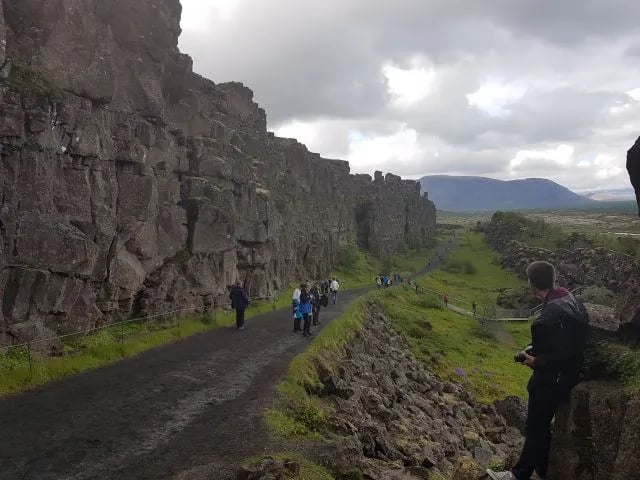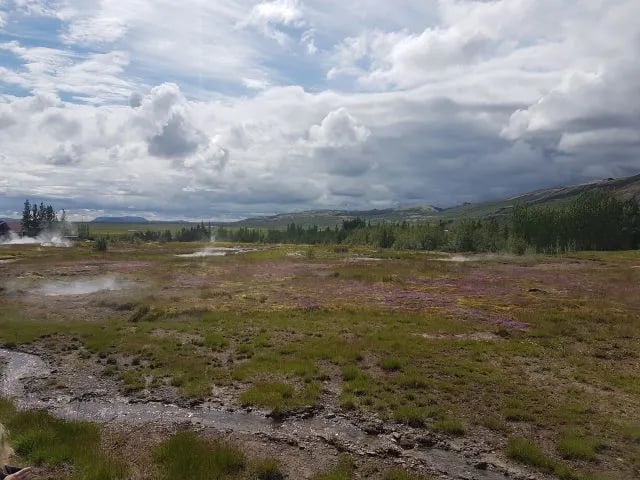In which world-building is like animal husbandry in Iceland
I’m not one of those writers who builds complicated worlds. Don’t get me wrong: I consider myself good at world-building, and I enjoy it a lot, but I don’t have an Apocrypha for any of my books floating around on my harddrive. I tend to build worlds as I need them, laying out pieces of the map just before I step on them and stitching together the magic as I figure out what I need it to do.
[Sidebar: sometimes this causes problems in revision. You have to do the work sometime. What I’m getting at is that you can pick when you do it, and for me, it’s easier to build a world when I already know what I want from it.]
When the Vikings arrived to settle in Iceland, they brought one kind of cow, one kind of horse, one kind of chicken, one kind of sheep, etc. etc. They had what they needed, barely, to survive. Before they arrived in Iceland, the island was inhabited only by arctic foxes (who had walked in from Canada during the last ice age), and about 130 species of bird. More or less, the animals that arrived in 874CE are the ones Iceland has today. This is the world that was built.
They spent about a thousand years revising.
(the edge of the North American tectonic plate and the beginning of the Mid-Atlantic rift. JUST CHILLING. AS YOU DO.)
It’s a simple system: 300,000 people, very specific animals that perform specific economic functions, slight more wiggle room with plants (though even that is limited by weather and by import laws), 130 volcanic systems, and the knowledge that, someday, the whole place will be completely torn apart.
That’s where I like to start, when I’m building a world. Just the necessities; enough to get through the winter, as it were. Some things to light on fire. Once your world has established itself, additions are made in one of two ways: revisions and readers.
You can’t take live animals into Iceland. Heck, you are super-restricted when it comes to taking dead animals into Iceland. You can’t bring in used riding gloves or horse brushes, and any tack you do bring has to be decontaminated in quarantine for a week. The Icelandic horse, made distinct by its five natural gaits, is very popular in Germany. There’s even an international competition for Icelandic horsemanship, but it has never and will never be held in Iceland itself. Once an animal leaves, it cannot come back. Early settlers cut down all the native trees to build houses and ships, and for fuel, which causes a problem with soil erosion. The trees are slowly being replaced, and a flower called the Alaskan Lupin has been introduced. It’s been successful—some would argue too successful, though not on a disastrous level. However, all attempts to diversify Iceland’s animal population has failed.
When you’re filling in the holes in your world-building, I recommend starting as small as you can. I say this because no matter how small you decide to go, the decision will invariably spiral out, and then you’ll have to keep following it to ensure your world makes sense. In A Thousand Nights, for example, there were a few technologies I needed my characters to have access to, even though as Middle Bronze Agers, they usually wouldn’t. To make this work, I incorporated it into the villain’s magic, and then made the cost of that magic so high that no one would, I don’t know, accidentally invent space travel. I needed to give them the Alaskan Lupin, and then make sure they didn’t cover the whole island with it.
Iceland became part of the Danish Empire accidentally. They’d petitioned Norway to adopt them—essentially—to deal with some internal strife, but then the Danes conquered Norway a few years later, and got Iceland as part of the package. Iceland didn’t regain its independence until 1944, when they sort of slipped away while Denmark was occupied. This is why, by the way, Iceland is not in the EU. They are fiercely attached to their independence, and thanks to two modern inventions (industrialized fishing and tourism), they can sustain themselves. They’re isolationists, but in the good way, if that makes sense, and last year they welcomed a million tourists. This year, they’re projecting two million.
Readers will expand your world in ways you never imagined possible. Fanart and fanfic, theories and arguments, angry emails you get at 2 in the morning telling you how wrong you are, all of it. As someone who’s spent a significant amount of time on both sides of this particular fence, I find it endlessly interesting (if also a bit scary). It constantly pushes me to be better, to improve my writing, and I find that I am taking fewer lazy world-building shortcuts as a result. There were about forty minutes between the cover reveal for That Inevitable Victorian Thing and the first alarmist email I received about the subject matter (namely, how could I possibly write the British Empire as the good guys), and I view that as an incredibly good thing. My readers are paying attention, and so am I.
When it comes right down to it, Iceland survives because it wants to. They have a tourism industry because they wanted one, and they control their environment as precisely as they can. As a result, they are very proud of their achievements, and they should be. They are almost entirely free of carbon fuels, and as fast as tourism grows, they are compensating for and managing it. It’s a little world, in the grand scheme of things, but it works, and if you want to build your own world, there are worse models you could choose to start with.
Sometimes, an island is enough.
+++
This week in Product Reviews No On Asked For, I FORGOT TO TAKE A PICTURE of this bottle of what I think was Ginger Beer that I found in the local shop in Thurso. It was called Curiosity Cola and I really need to get better at this if I am going to be a professional about it.

